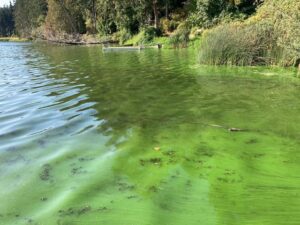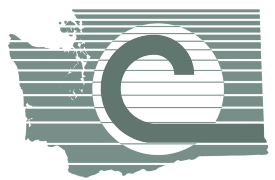
Harmful algal blooms (HABs), caused by the proliferation of cyanobacteria, can cause human and wildlife illness and even death. In 2021, the Washington Association of Conservation Districts adopted a resolution to establish a workgroup to assess the status of HABs in the state, the adequacy of current funding for monitoring HABs, the adequacy of funding for programs to address HABs statewide, and to recommend actions that conservation districts could take to reduce the frequency and duration of HABs in Washington. After a year of monthly meetings, the workgroup and an associated technical advisory committee recently completed a report with recommendations.
Conservation districts working alone cannot solve a problem like HABs. Consequently, the workgroup recommended a whole-of-government approach for HABs management in Washington that includes grant funding and staffing recommendations for natural resource agencies, particularly the Conservation Commission and the Departments of Ecology and Health. The recommended funding would allow for coordination of HABs management between management agencies, research, monitoring and planning for mitigating HABs, implementation of watershed and in-water management strategies, and assistance for suppliers to ensure delivery of healthy drinking water when source waters have HABs.
Download the report: Final Work Group Report on Harmful Algae Blooms - 2022 (1179 downloads )
Also see:
- Algal bloom: https://en.wikipedia.org/wiki/Algal_bloom
- Cyanotoxin: https://en.wikipedia.org/wiki/Cyanotoxin
